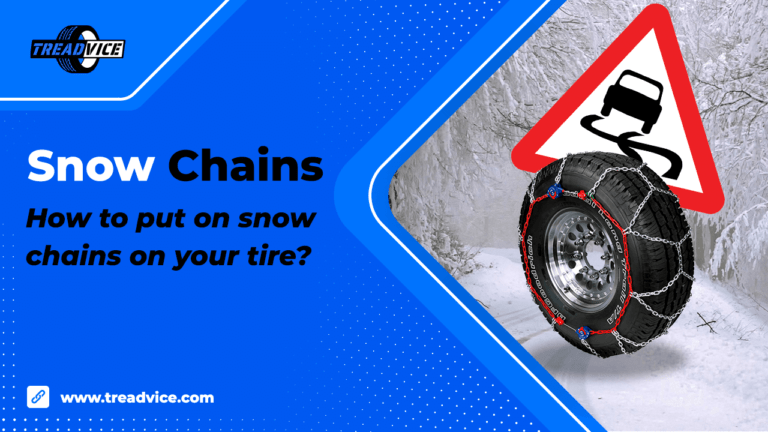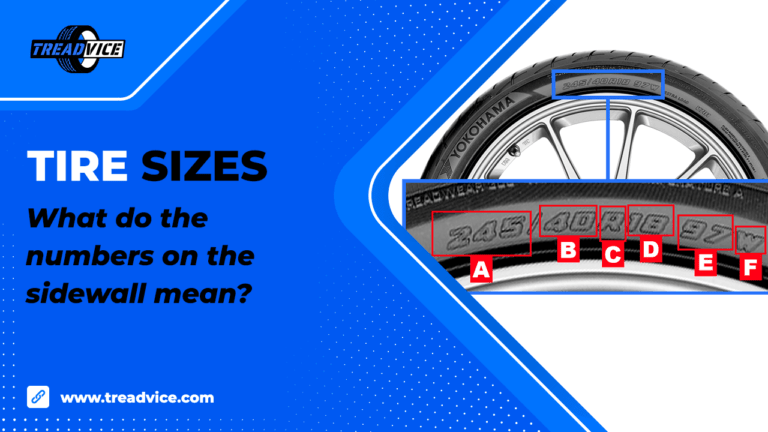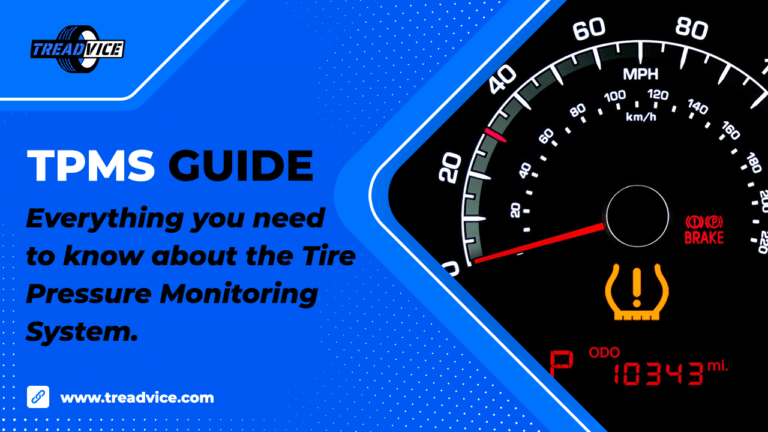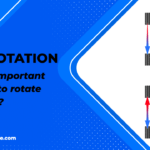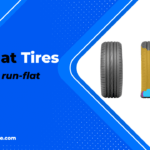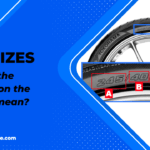Nighttime journeys can be mesmerizing with quieter roads and a serene ambiance. Whether it is for work purposes or to refresh our minds, late-night road travels have become a common occurrence in our daily lives. But what happens if your tire gets punctured? It sounds stressful, doesn’t it? However, there’s no need to worry. There are tips and strategies on how to handle a situation with flat tires and solve the problem.
Table of Contents
What to do when you face a flat tire problem at night?
Insure your safety
- Stop driving: Driving with flat tires can cause severe accidents and harm you and the other vehicles passing on the road. So whenever you notice a flat tire while driving, you should stop driving.
- Park your car in a safe location: If it’s a road full of other vehicles, you should park your car on the side of the road and turn on your hazard lights.
- Ensure that your passengers are fine: Be careful if you have people with you in the car. Make sure they stay inside and away from the road. If you can, put on reflective clothes to help others see you better.
Check for roadside assistance
- Call Roadside Assistance: If you can’t fix the flat tire yourself then call a special service that helps in situations like this. They might take a little longer to come because it’s nighttime, but they’ll send someone to help you.
Some of the best roadside assistance providers:
- AAA ( American Automobile Association )
- USA Roadside Services
- Allstate
- best option for military, veterans, and their eligible family members: USAA
- Check Your Insurance: Your car insurance might already have a deal with these helpful folks. So, you can call your insurance company and ask for their help. They’ll send an expert to help you change the tire.
- Google Local Towing Companies: You can also search on the internet for towing companies in your area. Some of them work all day and night and can help with flat tires. The cost of their help depends on where you are and the time of night.
Equip Yourself
Dealing with a flat tire situation in the middle of the night will require some equipment such as,
- An extra tire in your car that’s filled with air.
- Jack and lug wrench tools to safely lift your car and take off the flat tire.
- A strong flashlight helps you see what you’re doing in the dark, like changing a tire at night.
- Reflective triangles or flares so you can put them behind your car to show other drivers that your car is stopped. It works like a signal to be careful and watch out for your car.
Try to assess the Damage
- First, figure out which tire is flat. Look closely and try to understand why it’s flat – was it because of something like a nail, a sudden burst, or just a slow loss of air?
- Take a good look around. See if there’s anything dangerous nearby, like sharp objects on the road or any uneven ground. You want to make sure the area is safe before you start fixing the tire.
Change the flat tire
If you decide to change the flat tire yourself, follow these steps:
- Loosen the Lug Nuts: Use your lug wrench to start making the lug nuts on the flat tire a bit looser. Don’t take them off completely, just get them moving.
- Prepare the Jack: Put the jack in the right spot under your car, following the manual. Then, use the jack to lift your car until the flat tire is just above the ground.
- Take Off the Flat Tire: Finish taking off the not-so-tight lug nuts and remove the flat tire. Put it nearby where you can easily grab it.
- Put on the Spare Tire: Carefully place the spare tire onto the wheel studs and start tightening the lug nuts using your hand.
- Lower the Car: Gently bring your car back down to the ground using the jack until the spare tire is fully touching the ground.
- Tighten the Lug Nuts: Now, use your lug wrench to tighten those lug nuts. Do it in a crisscross pattern to make sure they’re all nice and tight.
- Double-Check the Lug Nuts: After a little drive, check those lug nuts one more time to be sure they’re still nice and tight. Your spare tire should be good to go!
Drive cautiously along the way
After you’ve changed the flat tire, it’s important to drive slowly and pay close attention to the road:
Spare / donut tires are only meant for short distances, so don’t go too fast. Keep your speed at 50 mph or less, as it says in your car’s manual.
As soon as you can, take your car to a tire shop to get the flat tire fixed or replaced. Spare tires are just temporary fixes.
Be prepared for nighttime flat tire situations always
- Equipments: Keep a spare tire, a jack, a lug wrench, and a tire repair kit in your car. These can be real lifesavers if you run into a minor issue.
- Know Where You Are: Pay attention to where you are. Remember landmarks or road signs, so you can tell someone your exact location when you call for help.
- Charge Your Phone: Make sure your phone has enough battery, and bring a portable charger just in case.
- Think About Roadside Assistance: Consider getting a plan that helps you in situations like this. Some car clubs and insurance companies offer these plans, which can be a big help during nighttime tire troubles.
- Learn About Your Car: Read your car’s manual and figure out how to change a tire before you need to do it.
How to avoid a flat tire situation?
Well, one can never tell when a flat tire problem will arise but you can always prepare yourself for situations like these.
Here are some tips you should consider to avoid a flat tire:
- Heed your tire pressure warnings: If your car has a Tire Pressure Monitoring System (TPMS), listen to it. If it tells you your tire pressure is low, don’t ignore it. Address it as soon as you can.
- If you don’t have TPMS, keep an eye on tire pressure: Check your tire pressure regularly. Just grab a tire pressure gauge and refer to your car’s manual for the recommended numbers. Properly inflated tires are less likely to give you trouble.
- Inspect your tires: Take a look at your tires now and then. Look for cuts, punctures, or if they seem to be wearing unevenly. If you spot any damage or strange wear patterns, it’s time to consider new tires.
- Give your tires a workout: Rotate and balance your tires as your car’s manual suggests. This helps them wear evenly, which means they’ll last longer.
- Dodge the road minefields: Watch out for potholes, debris, and other nasty surprises on the road. Swerve around them if you can, especially if you’re cruising at high speeds.
- Calm down on the gas pedal: Lay off the aggressive driving. Hard braking and sharp turns can be hard on your tires. And when you’re on rough roads or speed bumps, take it easy to avoid damaging them.
- Load wisely: Don’t go overboard with the cargo. Overloading your vehicle stresses the tires. By inspecting the load index of your tire, you can calculate the maximum load you can carry.
- Get the right tires for the season: Use the right tires for the weather. In snowy or icy conditions, use winter tires, and switch to all-season ones when the sun is shining.
- Regular maintenance: Regular maintenance is key. Make sure your car’s suspension and alignment are in good shape, as bad alignment can mess up your tires.
- Stay clear of curbs: When parking or making turns, try not to bump into curbs. It can mess up the sidewalls of your tires.
- Take it easy on rough roads: Slow down when you’re driving through construction zones or on bumpy roads. Going easy can prevent debris or sharp objects from giving your tires a hard time.
- Balance and align your wheels: Follow the recommendations to balance and align your wheels. This helps your tires wear evenly and improves how your car handles.
By keeping these tips in mind, you’ll be less likely to end up with a flat tire, and your tires will thank you by lasting longer and keeping you safe on the road.
Minimizing the damage when your tire blows out
The good news is that, there are ways to minimize the damage and keep yourself safe in situation like this. One of the key solutions is to invest in run-flat tires.
Run-flat tires are designed to do just what their name suggests: run even after a puncture or a blowout. These innovative tires are engineered with reinforced sidewalls that support the vehicle’s weight, allowing you to continue driving for a limited distance at reduced speeds. This means you can safely reach a service station or a secure location, reducing the risks associated with a sudden blowout. If you want to know more about run flat tires, check out our detailed run flat tire guide.
Frequently Asked Questions (FAQs)
If you notice your vehicle pulling to one side, hear a thumping sound, or feel vibrations, these could be signs of a flat tire. Additionally, pay attention to the responsiveness of your steering wheel, as a flat tire can make it feel sluggish or difficult to control.
Driving on a flat tire can lead to a range of significant issues.
First, it places excessive pressure on the wheel rim, which isn’t designed to bear the full weight of the vehicle. This can cause the rim to deform or even crack, resulting in costly repairs.
The added strain on your car’s suspension system while driving on a flat tire can lead to damage or misalignment of suspension components, impacting your vehicle’s ride comfort and handling.
The risk of a sudden blowout increases, potentially resulting in a loss of control over your car and safety hazards. Uneven wear on other tires is another concern; it may require replacing multiple tires unexpectedly.
The additional rolling resistance caused by a flat tire can lead to increased fuel consumption and reduced efficiency.
Lastly, driving on a flat tire can further damage the tire itself, making it more difficult to repair and potentially necessitating a replacement.
Run-flat tires can indeed offer peace of mind by allowing you to continue driving for a limited distance after a puncture. However, they typically come at a higher cost and may provide a stiffer ride compared to conventional tires. Ultimately, the decision to invest in run-flats depends on your priorities and driving habits.
In addition to run-flat tires, tire sealants can provide a temporary fix for minor punctures by sealing the leak and reinflating the tire. However, these solutions are meant as short-term measures to get you to a repair facility and may not be suitable for all types of damage.
Driving on a flat tire even for a short distance can potentially damage the wheel rim, suspension components, and other tires. It’s recommended to pull over safely and address the flat tire as soon as possible to minimize further damage and ensure safety on the road.
Conclusion
In navigating the potential ordeal of a flat tire during nighttime, safety and preparedness are paramount. From promptly stopping and ensuring the safety of passengers to utilizing roadside assistance or local towing services, a structured approach can turn a stressful situation into a manageable one. Equipping oneself with the necessary tools and knowledge, including spare tires and basic repair skills, enhances readiness for such events. Moreover, proactive measures such as regular tire maintenance and prudent driving habits can significantly reduce the likelihood of encountering a flat tire, ultimately ensuring smoother and safer travels on the road.

